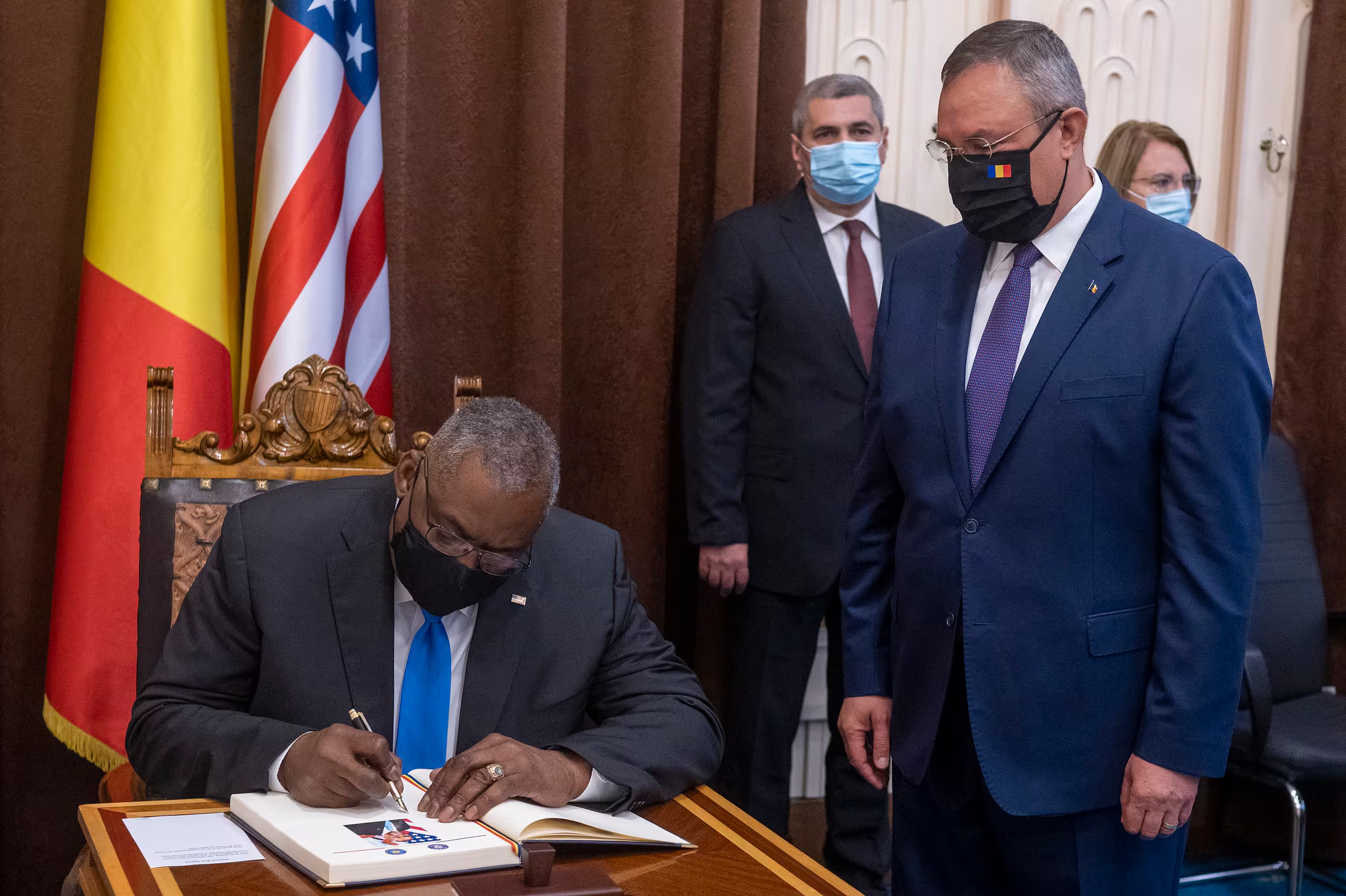


Explore the showroom floor at Spain’s FEINDEF security expo
The defense conference FEINDEF took place in Madrid, Spain, from May 17-19.

Airbus unveils jet trainer with eyes on Spain
The Spanish Air Force is interested in replacing its Northrop F-5M and CASA C-101 Aviojet aircraft.

Germany, US plan major aerial drill to defend Europe
The exercise will help allies hone interoperability between their assets, test their command-and control structures, and interact with various intelligence, surveillance and reconnaissance, space, and cyber capabilities.

5 questions with Airbus Spain’s FCAS lead
In 2019, Spain signed onto the Franco-German Future Combat Air System program to develop a fighter jet, weapons and drones by 2040. Airbus is playing a lead role in the developing phase.
More Stories

Germany, US plan major aerial drill to defend Europe
The exercise will help allies hone interoperability between their assets, test their command-and control structures, and interact with various intelligence, surveillance and reconnaissance, space, and cyber capabilities.

5 questions with Airbus Spain’s FCAS lead
In 2019, Spain signed onto the Franco-German Future Combat Air System program to develop a fighter jet, weapons and drones by 2040. Airbus is playing a lead role in the developing phase.

As Europe looks to the Indo-Pacific, so does the Luftwaffe
The German Air Force is preparing to send fighters, tankers and transport aircraft across the world to the Asia-Pacific region in a little less than a year. Will its EU colleagues join in?

Romania, Ukraine say more troops needed on the Black Sea
Ukraine and Romania want Western allies to step up their military presence in the Black Sea, according to letters obtained by Defense News.
By Joe Gould
General Dynamics’ Europe team dips into remote-controlled vehicles, ground robots
General Dynamics European Land Systems has rolled out a remote-driving concept for its vehicle lineup that the company presented on its ASCOD light tank at the FEINDEF defense exhibit.
FCAS program could ‘transform’ Spanish defense sector in a decade
A key factor in Spain’s decision to participate in the program was to “gain capabilities” and ensure more autonomy for its national industrial base, says Spanish Air Force Col. Luis Villar Coloma.
US, European officials pursue increased defense cooperation
At issue is how both sides of the Atlantic can bridge the opposing poles of competition and cooperation as they seek to connect their defense industries in search of better capabilities for all.
Spanish air chief calls for Madrid to meet NATO’s 2 percent defense spending goal
The Spanish air force’s top military official wants his country to invest more in its military apparatus, to be able to defend itself at home and contribute to its international partnerships.
F-35, Eurofighter Typhoon are ‘the two options’ to replace Spain’s aging Hornets
Spain has two aircraft in mind to replace over 70 EF-18A fighter jets, and while the program has yet to formally begin, the informal competition between the Eurofighter Typhoon and the Lockheed Martin F-35 is just getting hotter.
Space sector exec: Spain must stand out among its neighbors in nascent domain
Spain requires a national strategy to grow and nurture its military space-industrial potential, and stand out as a European leader in the nascent domain, according to a small satellite company leader.
Trophy interceptor undergoes live-fire tests on Germany’s Leopard tanks
The Israeli government said the system achieved a threat interception rate exceeding 90 percent.
‘We are in a very crucial period’: European Defence Agency boss on collective defense
European Defence Agency chief executive Jiri Sedivy talks about what's next in European defense cooperation.
NATO ups the ante on disruptive tech, artificial intelligence
NATO has officially kicked off two new efforts meant to help the alliance invest in critical next-generation technologies and avoid capability gaps between its member nations.
Amid high hopes, can the European Patrol Corvette deliver?
An industrial source told Defense News that each vessel is expected to cost around €250-300 million, making the Corvette program worth €5-6 billion, even before Greece confirms an order and any new members sign up.
By Tom Kington



